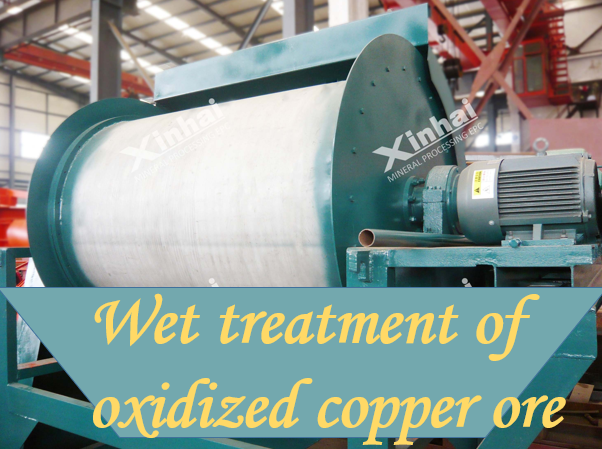Wet treatment of oxidized copper ore
2024-10-14 Xinhai (1558)
2024-10-14 Xinhai (1558)
If you have any questions, please contact us through the following ways, we will give you more and better assistance!

Oxidized copper ore is formed due to the long-term exposure of copper sulfide deposits to the surface, and the strong action of groundwater containing oxygen and carbon dioxide and biological organic matter. The oxidation zone is usually located in the surface part of the deposit, with a thickness ranging from a few meters to tens of meters, sometimes even up to 900 meters. Common copper-containing minerals in oxidized copper ore include malachite, chrysocolla, cuprite, earthy black copper ore, copper alum minerals, surface sulfides and native copper. These minerals have diverse compositions and complex structures, and contain a variety of useful elements, such as nickel, cobalt, gold, silver, iron, sulfur, platinum, etc.
Acid leaching is the main wet method for treating oxidized copper ore, and dilute sulfuric acid is usually used as the leaching agent. This method is suitable for treating ores containing acidic gangue, especially for extracting copper from low-grade, off-surface ores and residual ores. Acid leaching includes heap leaching, pool leaching, in-situ leaching and stirring leaching. Methods for recovering copper from leachate include leaching-displacement, leaching-precipitation-flotation, and acid leaching-extraction-electrodeposition. Heap leaching is to pile up low-grade ore and then leach it by spraying or dripping, which has the advantages of low investment and simple operation.
Ammonia leaching is suitable for treating oxidized copper ores with alkaline gangue and more mud. The ammonia leaching agent is usually an ammonia-ammonium solution. During the ammonia leaching process, copper minerals react with ammonia to form copper-ammonia complexes, but they are easily decomposed under high temperature and high pressure. Methods for recovering copper from ammonia leachate include ammonia evaporation and extraction-electrodeposition. Although ammonia leaching has high equipment requirements, may pollute the environment, and has high energy consumption, it can effectively treat certain types of oxidized copper ores.

Bacterial leaching uses the redox characteristics of bacteria and their metabolites to oxidize or reduce certain components in metal minerals, thereby achieving the separation of useful components. This method is suitable for treating silicate-type oxidized copper ores, copper sulfide oxidized copper ores with less carbonate content, and copper-containing slag. Bacterial leaching is an environmentally friendly extraction method, but it may require a long processing time.
The comprehensive utilization of copper oxide ore not only helps to improve the utilization efficiency of resources, but also reduces environmental pollution. By adopting appropriate extraction methods, copper and other valuable elements can be effectively recovered from copper oxide ore. With the advancement of technology, more efficient and environmentally friendly copper oxide ore processing technologies may be developed in the future to meet the growing demand for copper and environmental protection requirements.